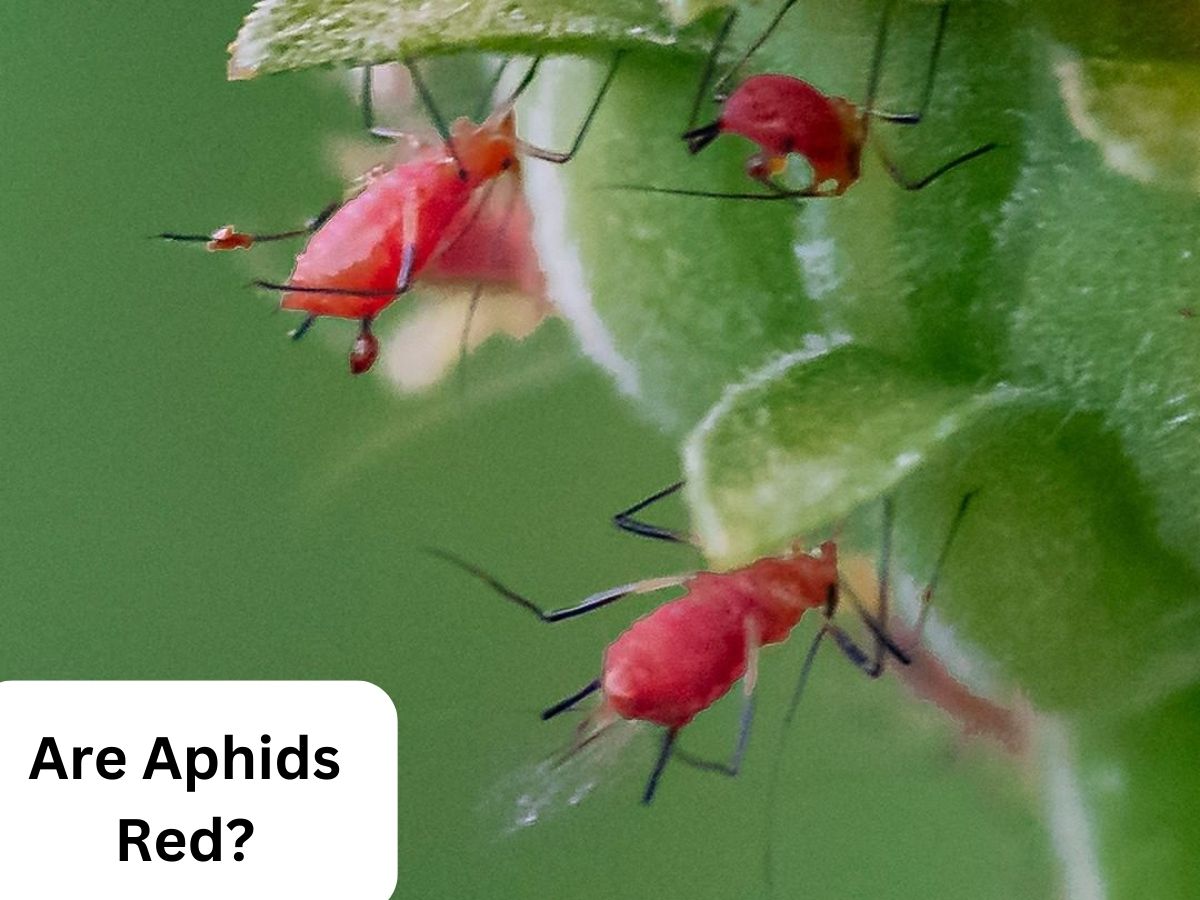Curious gardeners and nature enthusiasts often find themselves pondering, “Are aphids red?” Amidst the lush tapestry of plant life, these tiny creatures emerge as a focal point of fascination. Aphids, those minuscule insects that call leaves and stems their home, have an uncanny ability to captivate our attention. And when it comes to their colors, the intrigue only deepens.
Picture this: a sea of green leaves swaying in the breeze, each leaf cradling its miniature world of life. Among them, you spot a congregation of aphids, displaying an astonishing range of hues. But the question lingers—does red truly dominate their color spectrum?
In the enchanting realm of aphids, colors hold the key to their captivating existence. While red is indeed a prominent shade within their palette, these diminutive creatures are far from a one-color wonder. From the rich scarlet of a rose aphid to the delicate pastel green of a pear aphid, their colors tell tales of adaptation, survival, and even communication.
As we embark on this exploration, prepare to uncover the intricacies of aphid coloration. Beyond the surface, we’ll delve into the science that orchestrates their vibrant appearances. We’ll decipher the secrets that hues like red hold—whether they serve as a beacon for danger or an elegant camouflage amidst the foliage. So, if you’ve ever wondered whether aphids truly don the shade of red, prepare to be amazed by the kaleidoscope of colors that grace these remarkable garden residents.
The Diverse World of Aphids
In the intricate tapestry of the natural world, aphids emerge as tiny, yet integral, players. These minuscule insects, often no larger than a grain of rice, play a significant role in the ecosystems they inhabit. Aphids belong to a unique group of insects known as Hemiptera, and their presence extends far beyond their size.
Aphids are best known for their feeding habits—tiny sap-sucking mouthparts allow them to extract nutrients from plants. While this may sound like a one-sided relationship, aphids’ role extends beyond mere consumption.
They inadvertently contribute to nutrient cycling by excreting a sugary substance known as honeydew. This secretion serves as a source of food for other insects, such as ants, and even forms the basis of relationships with certain fungi.
Diversity in Aphid Species and Colors
Astonishingly, there are over 5,000 species of aphids spread across the globe, each adapting to its unique environment and host plants. This remarkable diversity is not confined to their habitats alone—aphids come in an astounding array of colors. While red aphids might catch our eye due to their vibrant hue, they are just a fraction of the spectrum.
From the lush green of leaf-dwelling aphids to the earthy brown of those inhabiting tree bark, their colors paint a vivid picture of adaptation. Some aphids mirror the tones of their host plants, seamlessly blending in to avoid detection by predators. Others boldly showcase contrasting colors, potentially as a form of warning to predators or even to communicate with fellow aphids.
In the symphony of life, aphids play a harmonious tune, their colors, and roles intertwining with the ecosystems they call home. This diversity—both in species and in shades—reiterates the intricate nature of nature itself, reminding us that even the tiniest creatures have a profound impact on the grand tapestry of life.
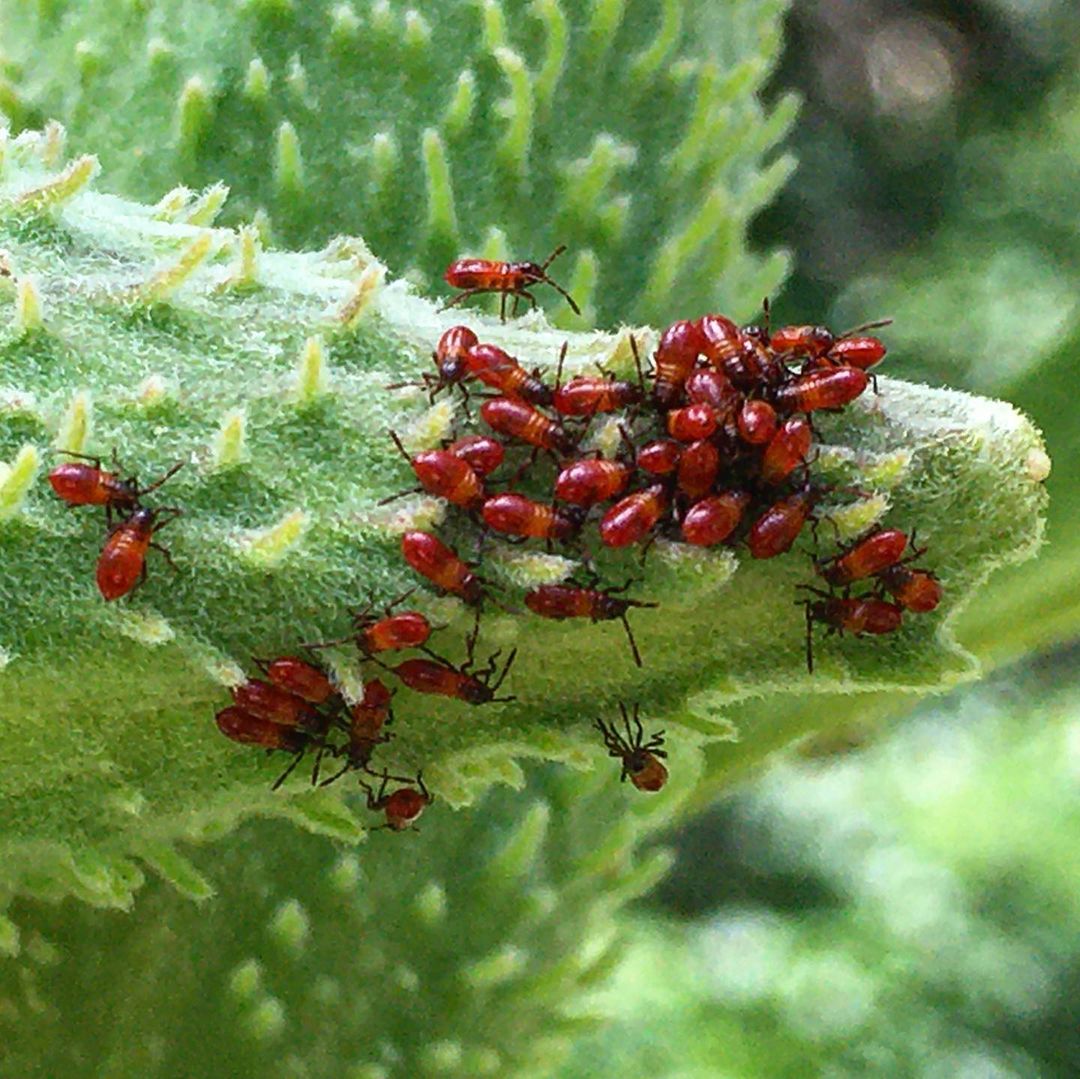
Are aphids red
Absolutely, aphids can indeed be red, but it’s important to note that red is just one color among the many that aphids exhibit. While red aphids are quite notable due to their vibrant and eye-catching hue, aphids come in a wide range of colors, including green, yellow, brown, and even black.
The diversity in aphid colors is a fascinating aspect of their biology, and it’s a testament to their ability to adapt to various environments and plant hosts.
So, in answer to your question, yes, aphids can be red, but they also showcase an impressive spectrum of other colors that make them a captivating subject of study in the world of entomology and ecology.
Are all aphids red?
No, not all aphids are red. While red aphids do exist and are often quite striking, they represent just a portion of the diverse color palette exhibited by these tiny insects.
Aphids come in a range of colors, including green, yellow, brown, black, and various shades in between. This wide array of colors reflects their adaptability to different environments and host plants.
The perception that all aphids are red might arise from the fact that red aphids can be particularly noticeable due to their vibrant coloration.
However, it’s important to recognize that the world of aphids is rich in variation, and their colors play significant roles in their survival strategies, such as camouflage, signaling, and temperature regulation. So, while red is a noteworthy hue among aphids, it’s just a part of their colorful story.
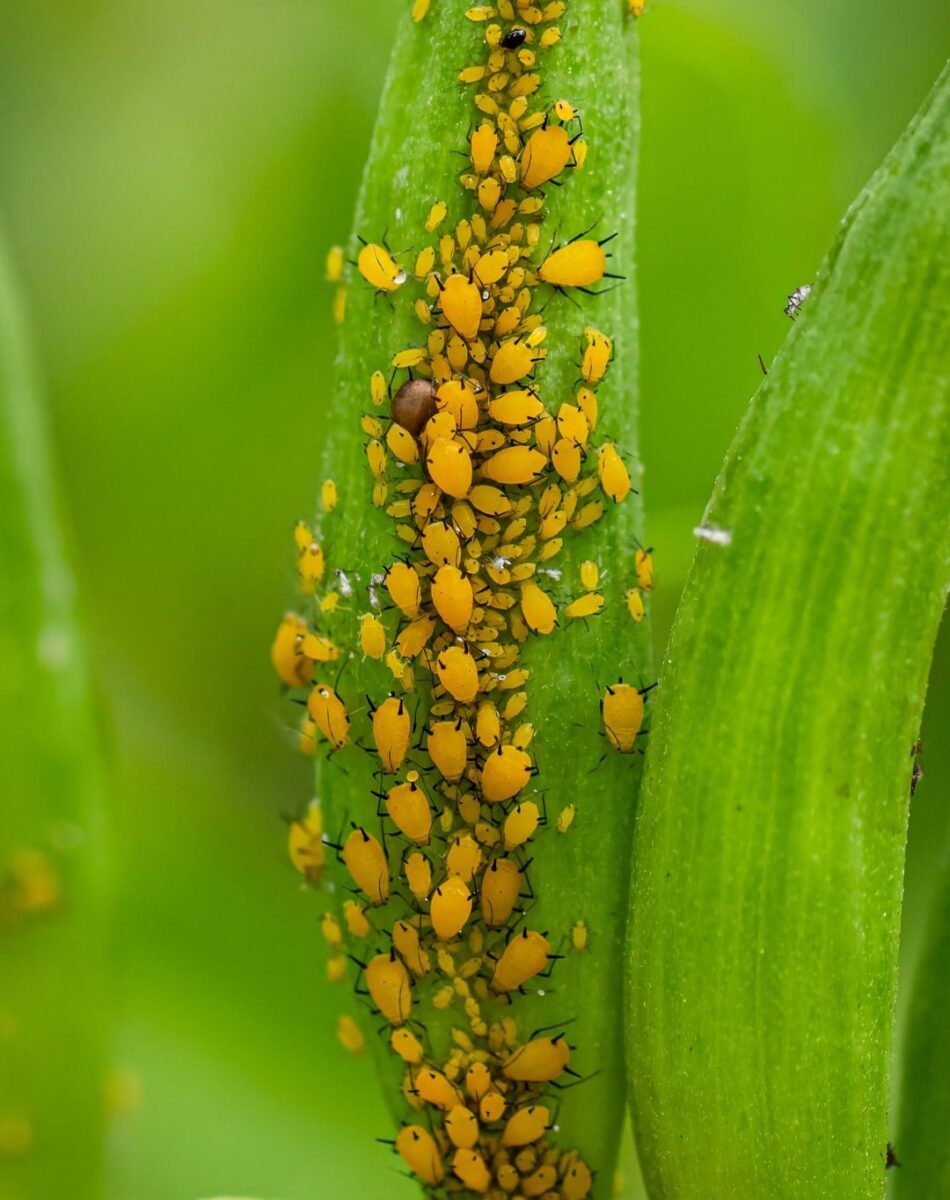
What Role Does Diet Play in Aphid Colors?
The role of diet in determining aphid colors is a fascinating aspect of their biology. What aphids eat, or more specifically, the type of plants they feed on, can significantly influence the colors they display. This phenomenon is closely tied to the pigments that aphids acquire from their food sources.
Aphids are known for their sap-sucking feeding behavior, where they extract nutrients from plants. Some of the pigments responsible for aphid colors, such as carotenoids and anthocyanins, are obtained from the plants they feed on. This means that the pigments present in the plant’s tissues are absorbed by the aphids during feeding, subsequently affecting the color of the aphids themselves.
For instance, aphids that feed on plants rich in carotenoids may exhibit yellow or orange hues due to the presence of these pigments. On the other hand, anthocyanin pigments can lead to the development of red or purple colors in aphids when they consume plants containing these compounds.
The relationship between aphid diet and coloration underscores the intricate connections between insects and their plant hosts. As aphids feed, they not only obtain sustenance but also incorporate the very pigments that contribute to their diverse color palette. This dynamic interplay between aphids and the plants they consume adds a layer of complexity to the study of aphid colors and their adaptations to different environments.
In essence, diet plays a crucial role in determining aphid colors by providing the pigments that contribute to their vibrant hues. This phenomenon highlights the remarkable ways in which nature weaves together the lives of organisms within ecosystems, creating a symphony of colors that reflect the interconnectedness of life.
Can Aphids Change Color?
Absolutely, aphids are capable of changing color due to various environmental factors. This ability to alter their coloration in response to their surroundings is a remarkable adaptation that helps them survive in diverse habitats. Let’s explore instances where aphids can change color and the reasons behind these adaptive changes.
Temperature-Induced Color Changes
One of the most intriguing instances of aphid color change is in response to temperature fluctuations. Aphids can exhibit different colors at various temperatures. For example, some aphids might appear darker or more intensely colored in cooler temperatures, while they might become paler or even translucent in warmer conditions. This adaptive response is often linked to temperature regulation.
Camouflage and Predator Avoidance
Aphids also have the remarkable ability to change their coloration to blend in with their surroundings. This adaptation serves as a form of camouflage, helping them evade predators. When aphids are exposed to different plant backgrounds, they can adjust their color to match the plants’ hues, making it difficult for predators to spot them.
Defense Mechanisms
Some aphids change color as a defense mechanism. When under attack, aphids might undergo a rapid color change that warns potential predators. For instance, they might display warning colors like red or orange to signal the presence of toxic chemicals they’ve acquired from their host plants.
Molting and Growth
Aphids go through several molting stages as they grow. During these stages, their color might change as their exoskeletons harden and pigments distribute differently. This can result in variations in color between instars, and the developmental stages between molts.
Seasonal Changes
Aphids can also change color in response to seasonal shifts. For example, as winter approaches, some aphids might develop darker colors to absorb more heat and enhance their chances of survival in colder conditions.
Communication Within Aphid Colonies
Aphids living in colonies often communicate with each other using chemical cues. This communication might extend to color changes. In some cases, aphids change color to signal certain conditions or to coordinate activities within the colony.
In conclusion, aphids are indeed capable of changing color due to a range of environmental factors. These adaptive color changes are not only fascinating but also crucial for their survival. Whether it’s to regulate body temperature, avoid predators, or communicate within their communities, aphids’ color-changing abilities exemplify the intricate ways in which insects adapt and thrive in diverse habitats.
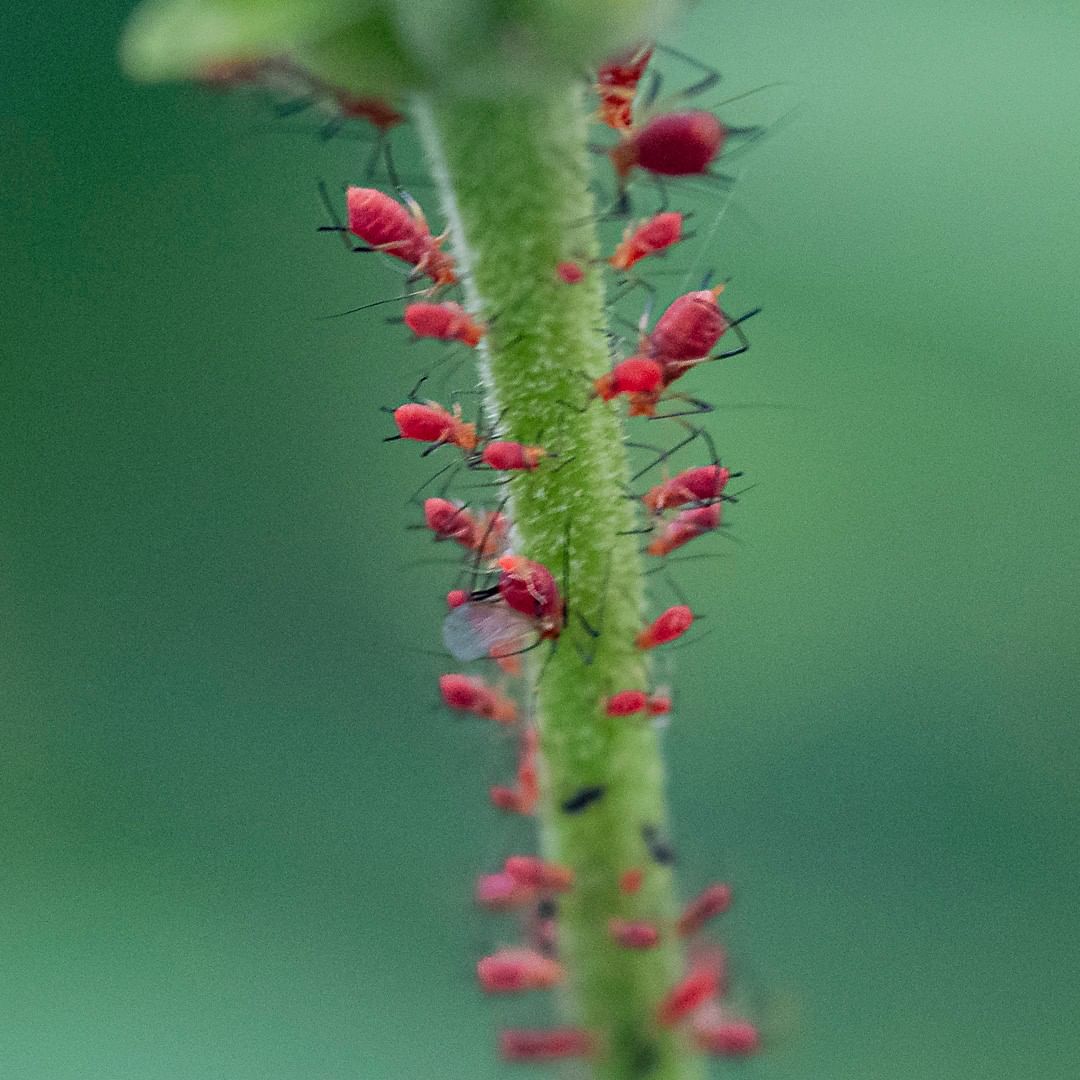
Common Aphid Colors and Species
The world of aphids is a vivid tapestry of colors, each shade representing a unique adaptation to their environment and host plants. While red might be the color that often captures our attention, it’s just one thread in the intricate weave of aphid diversity. Let’s explore some common aphid colors and the species that showcase these hues:
- Red Aphids: Bold and Striking Red aphids, like the Rose Aphid (Macrosiphum rosae), stand out with their vibrant color. These tiny insects can be found clustered on roses and other plants, their red hue serving as a captivating contrast against green leaves. The Red Cabbage Aphid (Brevicoryne brassicae) is another species known for its striking red coloration, often infesting cabbage and other cruciferous vegetables.
- Green Aphids: Masters of Camouflage Green aphids, such as the Green Peach Aphid (Myzus persicae), showcase a color that allows them to blend seamlessly with the leaves they inhabit. This green camouflage not only protects from predators but also helps them avoid detection by unsuspecting eyes.
- Yellow Aphids: Sunshine Shades Aphids like the Yellow Willow Aphid (Pterocomma salicis) exhibit shades of yellow, evoking a sunny disposition. These insects can be found on willow trees, showcasing a color that might serve various purposes, from temperature regulation to communication within their colony.
- Brown Aphids: Earthy and Discreet Brown aphids, such as the Brown Citrus Aphid (Toxoptera citricida), have a coloration that allows them to blend in with bark and plant stems. This earthy hue provides them with effective camouflage and protection from predators.
- Black Aphids: Mysterious and Contrasting Black aphids, like the Black Bean Aphid (Aphis fabae), exhibit a deep and mysterious color. Against green plants, their black appearance creates a striking contrast. These aphids often colonize bean plants and other legumes.
- Mixed Colors and Patterns: Intricate Designs Some aphids exhibit a combination of colors and patterns, creating intricate designs that vary among individuals and species. These patterns might serve various purposes, from communication to protection.
- White Aphids: Elegance in Simplicity White aphids, like the Woolly Aphid (Eriosomatinae), exhibit a soft and delicate appearance. These aphids often appear covered in a waxy substance, giving them a white, wool-like texture. This adaptation might serve as protection against predators or environmental conditions.
- Purple Aphids: Royal Tones in Nature Purple aphids, such as the Purple Passionflower Aphid (Aphis nerii), add a touch of regal elegance to the insect world. These aphids can be found on passionflower plants, where their purple hues create a mesmerizing sight.
- Blue Aphids: Uncommon and Intriguing While less common, blue aphids do exist, like the Blue Alfalfa Aphid (Acyrthosiphon kondoi). Their blue coloration is a rarity in the aphid world, captivating the attention of researchers and enthusiasts alike.
- Orange Aphids: Warmth and Vibrancy Orange aphids, such as the Orange Aphid (Blackman and Eastop) species, radiate warmth and vibrancy against green foliage. Their orange color might play a role in thermoregulation or serve as a visual cue within their colony.
- Pink Aphids: Delicate and Playful Pink aphids, such as the Pink Rose Aphid (Macrosiphum rosae), infuse a sense of delicacy into their surroundings. These aphids can often be found on roses and other flowering plants, adding a touch of playfulness to their environment.
- Variegated Aphids: Nature’s Masterpieces Some aphids showcase intricate patterns and variations in color, creating a truly artistic appearance. These variegated patterns can range from mottled to striped, making each aphid a unique masterpiece.
Each aphid species and its unique coloration tell a story of adaptation to specific habitats, plants, and ecological interactions. From the bold reds to the subtle greens, the world of aphids showcases a stunning spectrum of colors that reflects the incredible diversity of life in our natural landscapes.
In the vast world of aphids, each species and color represents a specialized adaptation to a specific ecological niche. Their diversity not only enhances the visual beauty of our natural landscapes but also reflects the intricate dance of life’s adaptations and interactions. As we uncover the kaleidoscope of colors that aphids display, we gain a deeper appreciation for the delicate balance that sustains our ecosystems.
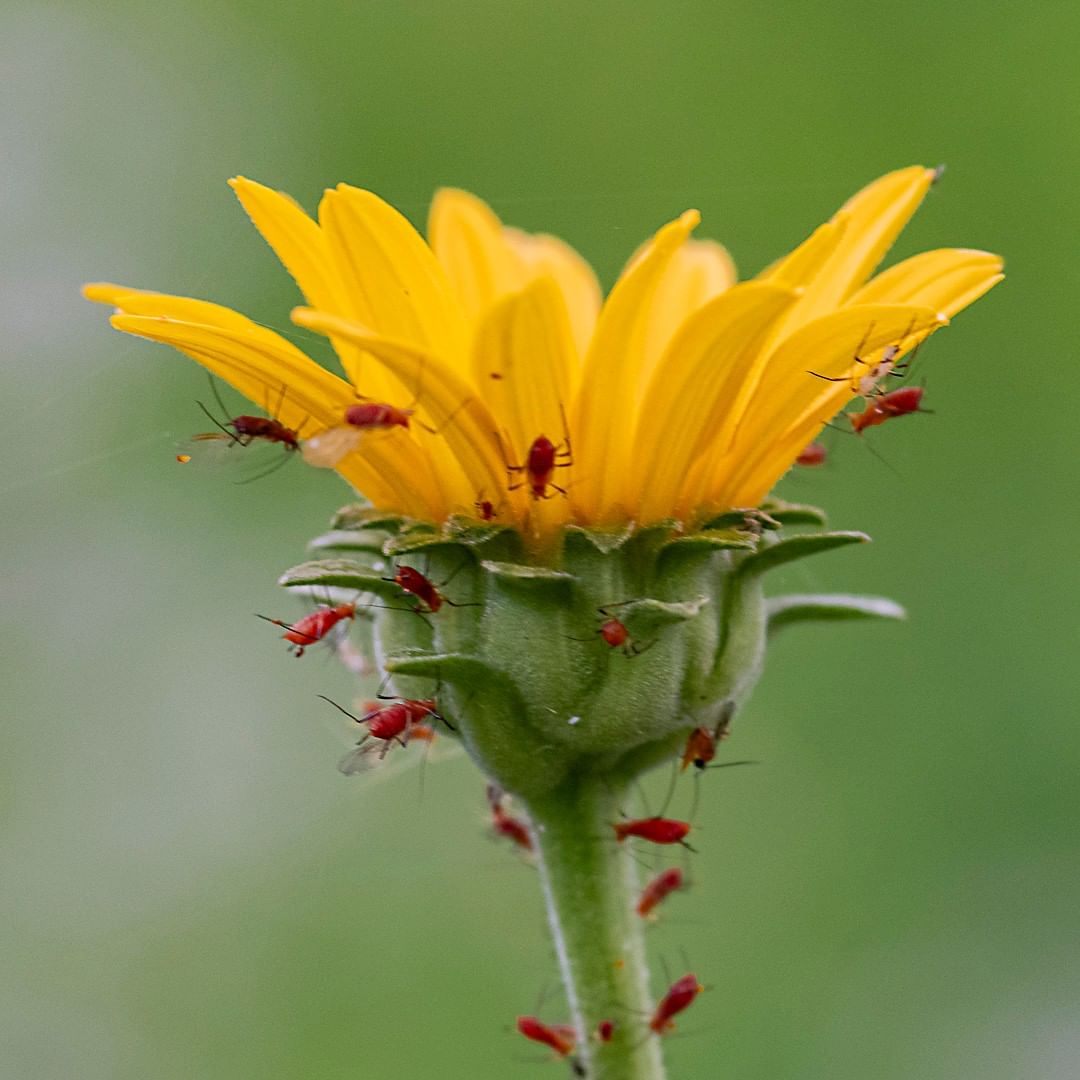
Conclusion
In the seemingly unassuming realm of aphids, a captivating story of colors, adaptations, and ecological connections unfolds. From the vibrant reds that catch our eye to the subtle greens that blend seamlessly with leaves, aphids present a kaleidoscope of hues that tell tales of survival and interaction.
As we’ve journeyed through the diverse world of aphids, we’ve discovered that these tiny insects are far more than meets the eye. They’re not just red; they’re a symphony of colors, each shade contributing to their ability to thrive in various habitats.
Their colors are not merely aesthetics; they’re tools for camouflage, temperature regulation, signaling, and even communication.
Aphids are nature’s living canvases, displaying pigments absorbed from the plants they feed on. These hues are more than decorative; they’re integral to their existence.
Temperature-induced color changes, predator avoidance through camouflage, and seasonal shifts in coloration are just a few of the remarkable adaptations that highlight their resilience.
From the common red aphids to the elusive blue and variegated species, aphids demonstrate that beauty isn’t limited to size or visibility. Their colors are a testament to the intricate dance of nature, where each species paints a unique stroke on the canvas of life.
So, the next time you encounter aphids in your garden or on a walk through nature, take a moment to appreciate the vibrant symphony of colors that these tiny insects contribute to the world. In their delicate presence, we find a reminder that even the smallest of creatures play a vital role in the intricate web of life that surrounds us.
